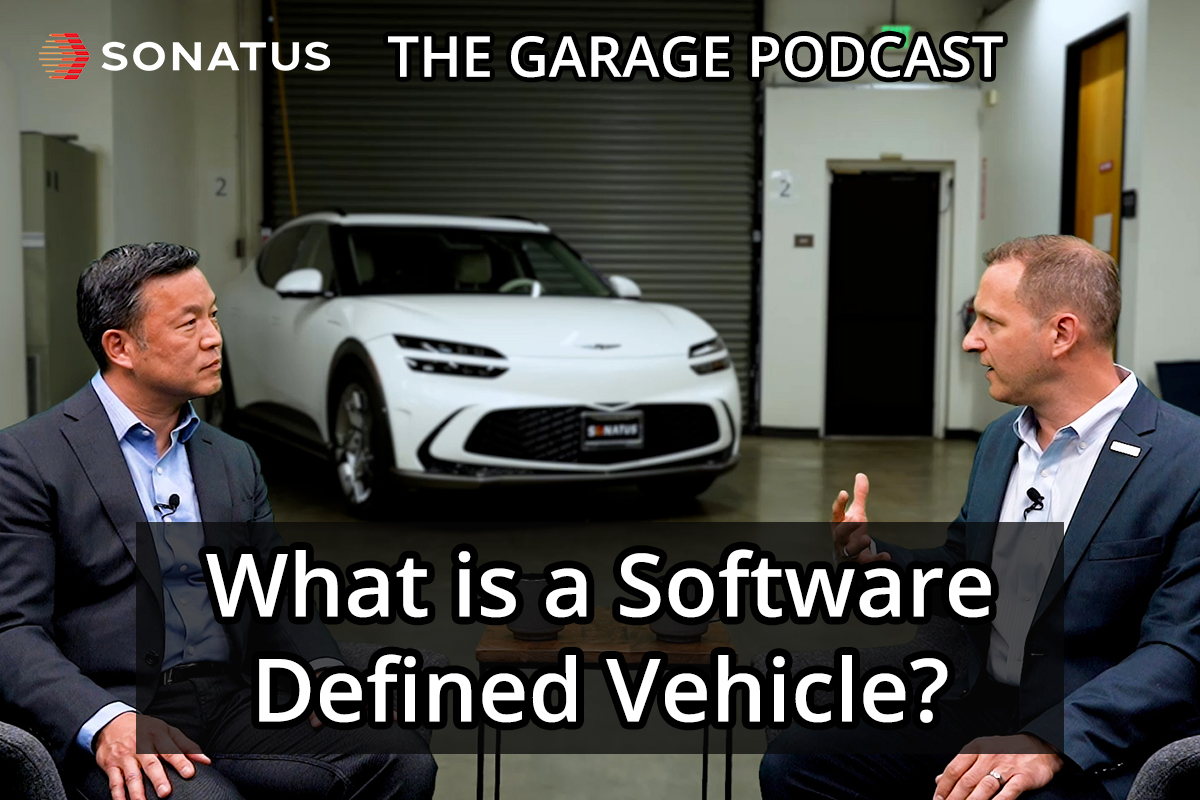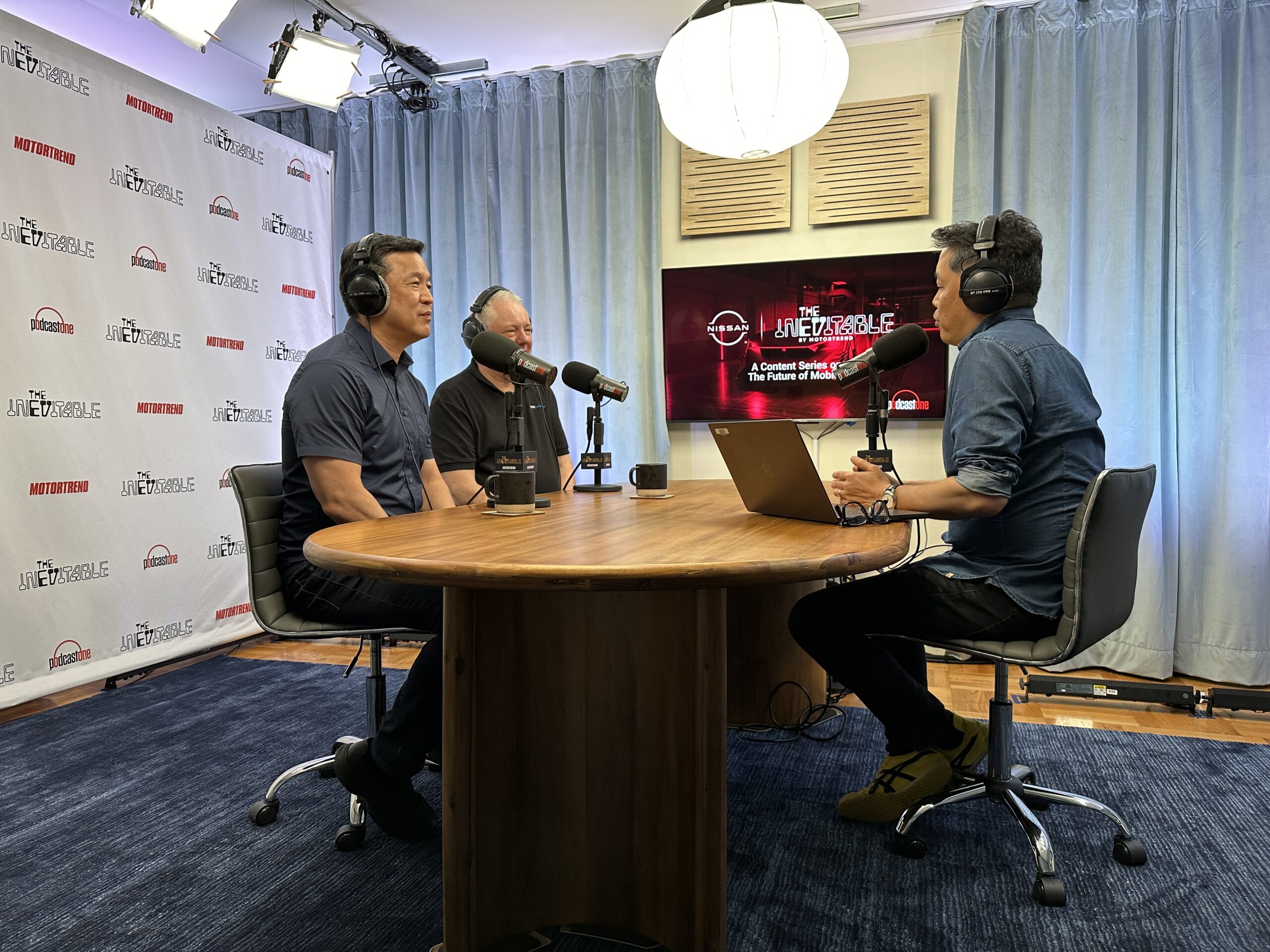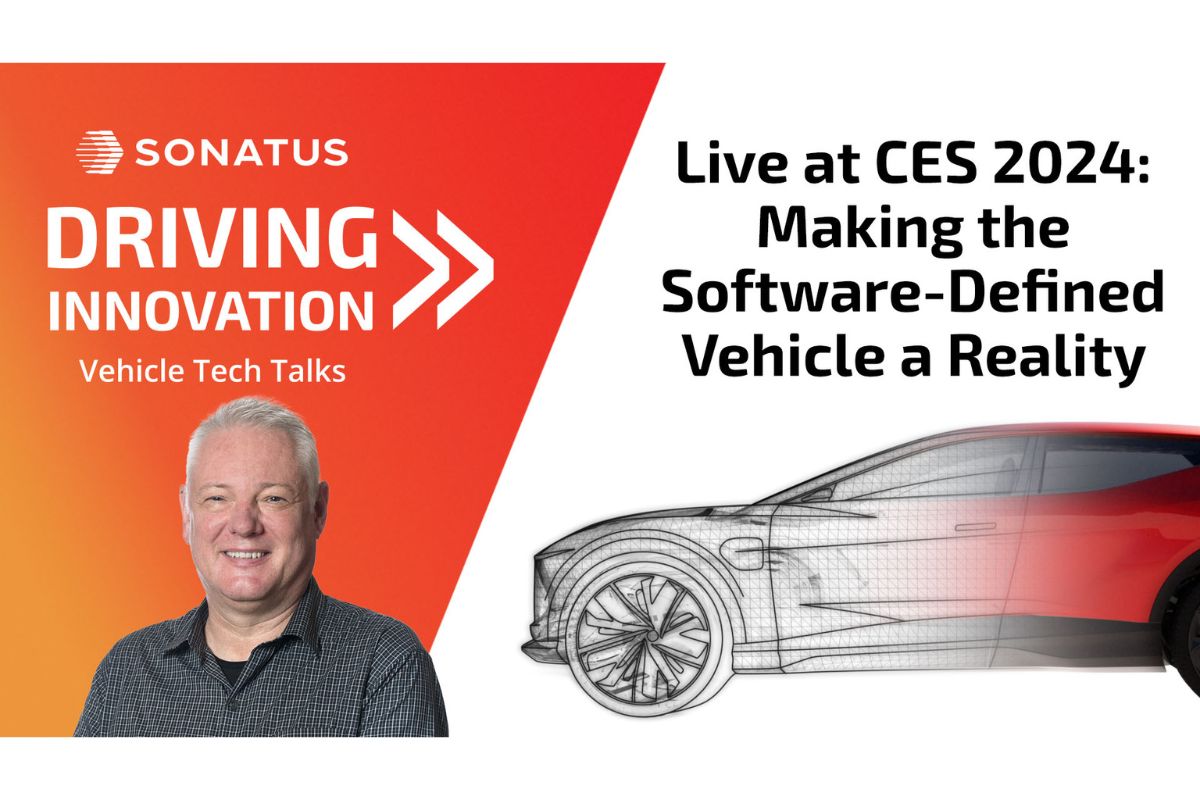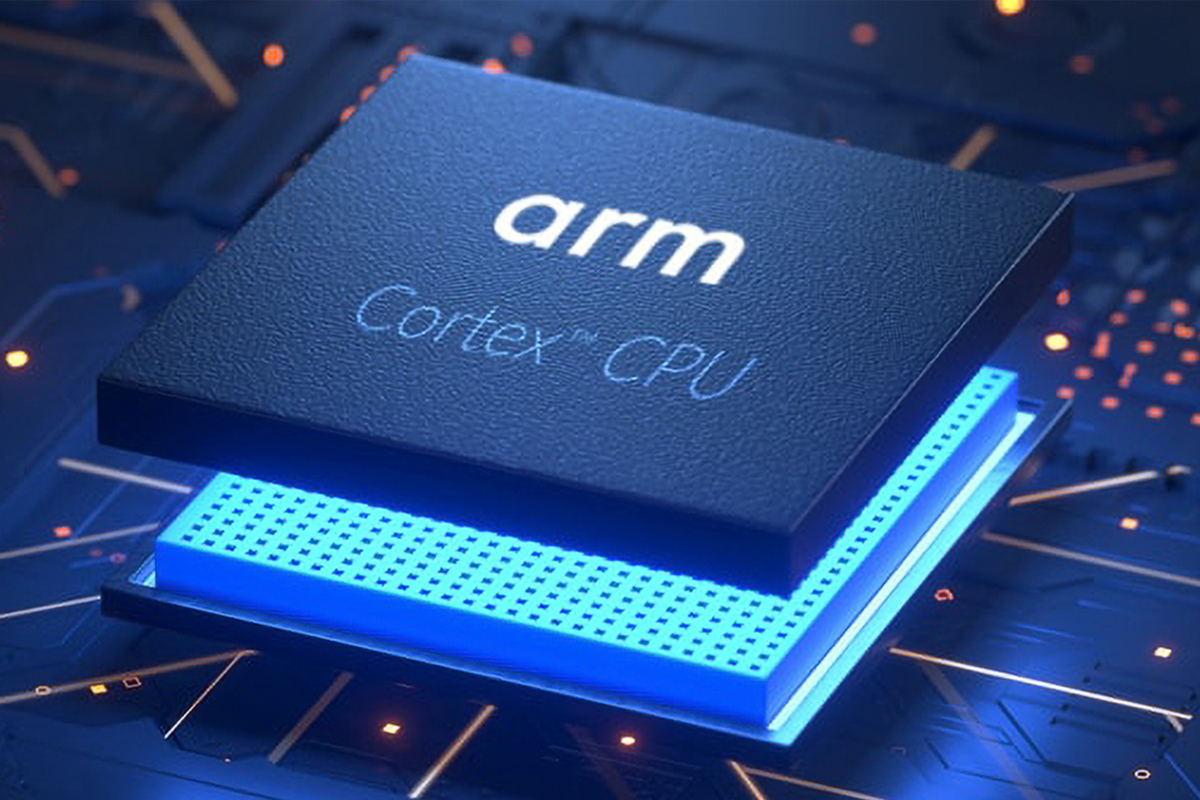Welcome
JOHN: In today’s episode of The Garage, hardware and software technologies to make software-defined vehicles a reality. Let’s go! Welcome to The Garage. I’m John Heinlein, Chief Marketing Officer from Sonatus, and today we’re going to be talking about specifically some of the hardware and software technologies needed to make this idea of software-defined vehicles a reality. We’ve got a special guest joining us today from Arm. It’s my good friend Robert Day. Robert, welcome to The Garage. Tell us about yourself and your role at Arm.
ROBERT: Thanks, John. Yeah, my name is Robert Day, I’m based here in California. I look after Arm’s automotive go-to-market for North America. And I have a secondary role where I’m Arm’s representative on the SOAFEE initiative.
JOHN: Robert, I’m so happy to have you on the podcast. You and I worked together for many years at Arm and many people know that I had a fourteen-year career at Arm, so Arm is very close to my heart, and I’m thrilled to have you as a guest on the show. And you mentioned SOAFEE, that’s something definitely really important we’ll cover later on in our conversation.
Arm’s role in automotive
JOHN: Arm is very well known for smartphones and other areas, but I’d love you to talk about Arm’s role in automotive, and the kind of markets you serve in automotive.
ROBERT: Yeah, sure. So Arm has been in the automotive industry and deployed in automotive applications since the mid-90s. So we’re pretty much in all parts of the car. You know, there are some real areas where we’re very strong, the infotainment, the digital cockpit, and now going into advanced driver assistance systems and autonomous vehicles. That’s really kind of where we’re playing in the larger systems within the vehicle.
JOHN: Kind of some of the high-performance systems, especially, it sounds like you have got a real toehold.
ROBERT: Yeah. I mean, it’s something that you know, having a low-power, high-performance processor is kind of useful in that circumstance.
JOHN: It’s interesting you mentioned that because I think a lot of people don’t think of low power as something that matters in a vehicle. Oh yeah, my cell phone, I need to be low power, but why vehicles? But actually, vehicles have constrained battery, they may have constrained footprint of where you can put electronic subsystems where cooling is an issue, so actually it matters and vehicles as well.
ROBERT: Oh, yeah, very much so, and especially as we go into these new electric vehicles, and, you know, having range anxiety and all that sort of interesting stuff.
JOHN: And I think it’s also the case that a lot of the advances in bringing high performance that Arm has done in mobile, and in things like data center, I think also benefits the car as well because you’re seeing a lot more compute requirements and driver assistance and navigation and so on, as well.
ROBERT: It’s all about software. And we’re going to get to that in a little bit. But yeah, honestly, you know, the more software that goes into a vehicle, the more processing you need to actually run that software.
Arm-based automotive silicon suppliers
JOHN: One of the strengths that Arm brings to the semiconductor market is the diversity of solutions. You know, it’s not one vendor, but it’s dozens and hundreds of vendors that deliver Arm-based solutions. But if we zero in on the automotive market, what are some of the major vendors who are shipping Arm-based automotive silicon today?
ROBERT: Yeah, our automotive silicon partners are hugely important to the deployment of systems in vehicles, obviously. And, you know, to name a few, we have Qualcomm, we have Renesas, we have Nvidia, we have NXP, and then we have AMD and Xilinx, we have Broadcom, and we’ve got some kind of interesting new partners such as Telechips, who released their Dolphin5 at Embedded World. So there’s some really exciting new silicon out there.
JOHN: As it happens, nearly all the development work that Sonatus has been doing is on Arm-based solutions from vendors like NXP, Broadcom, Marvell, and others, so we’re happy to have you and we have a very strong affinity to the work you guys are doing.
JOHN: We talk extensively about software-defined vehicles here in The Garage, and I’d love to hear your take on it from Arm’s perspective.
The shift to software-defined vehicles and four pillars to achieving SDV
ROBERT: Yeah, we see the software-defined vehicles as a really interesting trend right now as the automakers are really looking at how they can do more and more of the functions in the vehicle defined by software. What that enables them to do is rather like in the cell phone and the cloud world, you can actually update and upgrade those software functions. What this means to the consumer is that when your car leaves the forecourt, it can actually get better over time rather than like the applications on our cell phone. So this is going to have a quite a dramatic shift, both in how we live with our car, but also the relationship that the consumers have with the OEMs that are making that car. It’s going to be a really interesting time as we go into this software-defined vehicle future.
JOHN: That’s right. We’re hearing a lot of interest from OEMs about improving their customer experience and improving brand loyalty, so it sounds like some of these topics you’re talking will really help that.
ROBERT: Yeah, and it’s actually happening now. A recent Gartner survey said that 50% of the top 10 OEMs, automotive OEMs, will actually be shipping updatable software in their vehicles in 2023.
JOHN: That’s really interesting. We talked about extensibility as an important aspect of software-defined vehicles, so I’m excited to hear that statistic about that aggressive rollout. So how do we achieve that?
Pillar 1 for SDV: Use of standards
ROBERT: We see four pillars to achieving the SDV. The first pillar is the use of standards for development and deployment. This allows the differentiated parts of the software-defined vehicle being the applications themselves, not the tooling or the underlying software stack.
JOHN: That makes sense because you don’t get paid because, you know, the underlying layers work, you just need them to work, but you want to be able to add value on top.
ROBERT: Exactly, exactly, and I think that’s going to help focus where the software effort goes, and how those software standards are utilized.
Pillar 2 for SDV: Use of new software methodologies and technologies
ROBERT: Pillar two. So that’s the use of new software methodologies and technologies, and this is where we think the automotive industry can borrow from other industries such as cell phone development, cloud development and deployment, and use things like the CI/CD, continuous integration, continuous delivery methodologies to actually have agile development and deployment of software-defined functions in a vehicle.
JOHN: That sounds so important. I think the cloud is impacting so many different areas, bringing the cloud and bringing modern development practices into the car sounds super beneficial.
Pillar 3 for SDV: Vehicle simulation and development in the cloud
ROBERT: Yes, and the third pillar is actually using vehicle simulation in the cloud to actually develop, test the software away from the vehicle.
JOHN: I really like that concept. In fact, Sonatus is using that approach ourselves where historically we’ve been using purely hardware-based systems in where we have physical instances in our lab, but now we’re shifting to a cloud methodology where we can do a lot of our simulation in the cloud. It’s much more scalable and much more powerful.
ROBERT: That’s nice, you’re using pillar three already. I love it.
Pillar 4 for SDV: Collaboration
ROBERT: Pillar four is collaboration. There’s no one company that can develop and deploy the mountain of software that we need for the software-defined vehicle. We need a collaboration in the industry between the hardware and software companies, the OEMs and the tier ones, system integrators, everyone needs to come together to make this a reality.
JOHN: We’ve seen this in our own experience as well, we have a direct relationship with our OEM partners, but we’re also working with tier one suppliers and silicone suppliers and software partners and consortia to make sure we’re building on standard, so we’re experiencing what you’ve said, firsthand.
ROBERT: And talking of consortia, there really are a lot of different consortia coming together right now, bringing the industry together to try and tackle this whole software-defined vehicle.
SOAFEE: Scalable Open Architecture For the Embedded Edge
JOHN: With that in mind, maybe we should talk about SOAFEE, which is an important thing close to both of our hearts.
ROBERT: So SOAFEE is an industry-led collaboration that is looking at bringing cloud native methodologies, technologies, and tooling to automotive development to make the software-defined vehicle a reality.
JOHN: Can you share what SOAFEE stands for, because it’s an acronym right?
ROBERT: It is S-O-A-F-E-E, Scalable Open Architecture for the Embedded Edge.
JOHN: And I’m pleased to say that Sonatus was one of the early members of SOAFEE, and we’re proud to be part of it. So let’s dig into that a little bit more. Can you tell us the kinds of projects SOAFEE is working on?
ROBERT: So the main motivation and goals behind SOAFEE is really coming back to these four pillars making those a reality so we can make software-defined vehicle reality. So as I said, we’re going to be taking cloud native methodologies and applying them to the vehicle. The thing about the vehicle is it’s different to a cloud instance. We have to worry about things like functional safety, real-time, where you don’t have to do that in a cloud instance. And so a lot of what SOAFEE is really looking at and what people are coming together is, how do we bring these methodologies and these tools into a vehicle environment?
JOHN: So how many members are in SOAFEE and what kinds of companies are participating?
ROBERT: So we’re currently close to 90 members in SOAFEE, and that spans across the software ecosystem, the cloud world, hardware, OEMs, tier ones, system integrators, everyone’s getting involved with SOAFEE, and bringing their own expertise, their own technologies into this SOAFEE architecture and SOAFEE framework.
Cloud-native design for automotive
JOHN: So you mentioned a critical topic for SOAFEE is cloud native design. I’d love you to explore that a little bit more and talk about what cloud native means in general, and also how does it benefit automotive?
ROBERT: Cloud native are methodologies, technologies, and tooling, for the development of software applications in cloud instances. This involves methodologies such as CI/CD, we talked about earlier, which allows for the continuous integration and continuous deployment of software to, in this case, cloud instances, we’re taking it to the vehicle. This also involves breaking down the software into smaller pieces called “microservices”, which can then be more easily developed and deployed using these cloud native tooling and technologies.
JOHN: It’s also closely associated with a service-oriented architecture where services are published into the vehicle or into other parts of the system.
ROBERT: That’s exactly right, and this now brings in technologies that are used widely in the cloud such as containers, to easily land the software and microservices on their intended targets. It also involves technologies like orchestration, which will allow you to bring your software from the cloud, and rather than the cloud instance, down into the vehicle. This is a really good way of deploying software easily in an agile way to the vehicle.
JOHN: And I know one of the areas you’re working on is then extending the orchestration and container infrastructure to make aware when there’s safety, critical or real-time critical requirements of the containers.
ROBERT: Yeah, and coming back to pillar one with standards, we’re doing it using existing standards for both orchestration and containers, and actually looking at how we can use those in vehicle development, but also whether we need to extend them for that same development.
JOHN: So really extending them instead of reinventing the wheel.
ROBERT: Absolutely.
JOHN: Thanks for that fantastic overview of SOAFEE and I’m really excited to hear how much it’s growing and how many members are participating.
Future trends in automotive hardware and software architecture
JOHN: If we pull back and think more broadly, what do you see are some of the other future trends coming in software and vehicles?
ROBERT: So obviously, more proliferation of software, more software-defined functions, more software generally, we’re looking at hundreds of millions of lines of software, in your, you know, future generation vehicles, especially as we go up higher levels of autonomy. We’re also going to see a likely change in vehicle architecture. We’re already kind of witnessing it right now. We’re seeing things like zonal architectures, we’re seeing larger high-performance centraling compute, that will be required to actually bring the software functions to life.
JOHN: That’s a really good point, and we talked recently in another episode about the importance of modern networking in vehicles, and enabling zonal architectures is one of the many benefits. You can simplify the vehicle, reduce weight and cost, and assembly complexity, compared to today’s networks, which can be more cumbersome, so it’s a really powerful tool.
ROBERT: Yeah, and we see it’s coming right now, that’s the interesting thing. People are looking at these zonal architectures. A lot of them are kind of hybrid right now between domain controllers and zones, but it’s interesting watching this develop sort of in front of our eyes.
ECU and workload consolidation
JOHN: We’ve also talked in another episode about the importance of consolidating workloads, so an ECU runs multiple different code bases doing different jobs. Does Arm have a role in supporting that?
ROBERT: As the vehicle architecture changes, as we get more compute going into the different nodes in the vehicle, there is the ability to then run multiple software applications on a single processing system. This is where you’ll bring some technologies and techniques like virtualization and hypervisor and where containers can come in, that will actually enable these different software functions to actually coexist without interfering.
JOHN: I think that’s one of the many benefits of bringing Arm’s modern processor architecture into automotive because it unlocks a lot of these capabilities that have been commonplace in data center and mobile, but perhaps not so commonplace in automotive so far.
ROBERT: Yeah, that’s right, and it’s really enabling the shift to software-defined. That’s what this is all about.
Summary
JOHN: Well, Robert, thank you so much for this wide-ranging conversation. I’ve really enjoyed having you here.
ROBERT: Well, thank you, John, thanks for the invite to come down here and talk to you. It’s been a lot of fun, and it’s great to work with you and work with Sonatus as part of our Arm and our SOAFEE initiatives.
JOHN: On today’s episode of The Garage, we talked about critical hardware and software technologies needed to make software-defined vehicles a reality. We also talked about the importance of standards, bringing multiple companies together, and using technologies from other areas and bringing them and then applying them to automotive applications. We hope you enjoyed today’s conversation and we look forward to seeing you in another episode of The Garage very soon. Thanks very much.



